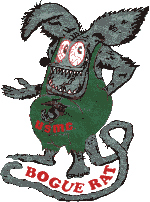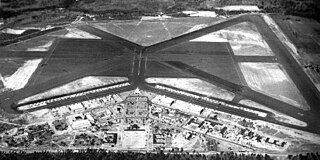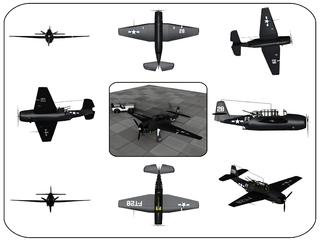
Naval Air Station Alameda was a United States Navy Naval Air Station in Alameda, California, on San Francisco Bay.

A naval air station is a military air base, and consists of a permanent land-based operations locations for the military aviation division of the relevant branch of a navy. These bases are typically populated by squadrons, groups or wings, their various support commands, and other tenant commands.

Naval Air Station (NAS) Oceana or NAS Oceana is a United States Navy Naval Air Station located in Virginia Beach, Virginia.

Naval Air Station Whiting Field is a United States Navy base located near Milton, Florida, with some outlying fields near Navarre, Florida, in south and central Santa Rosa County, and is one of the Navy's two primary pilot training bases. NAS Whiting Field provides training for U.S. Navy, U.S. Marine Corps, Coast Guard, and Air Force student pilots, as well as those of several allied nations. NAS Whiting Field is home to Training Air Wing Five.

Naval Air Station Meridian or NAS Meridian is a military airport located 11 miles northeast of Meridian, Mississippi in Lauderdale County and Kemper County, and is one of the Navy's two jet strike pilot training facilities.

Naval Air Station Kingsville or NAS Kingsville (NASK) is a United States Navy Naval Air Station located approximately 3 miles east of Kingsville, Texas in Kleberg County. NAS Kingsville is under the jurisdiction of Navy Region Southeast and is the headquarters of Training Air Wing Two. The station also operates a nearby satellite airfield, NALF Orange Grove.

Marine Corps Air Station Eagle Mountain Lake was a United States Marine Corps air station that was located 23 miles (37 km) northwest of Fort Worth, Texas during World War II. Commissioned on 1 December 1942, the air station was originally supposed to be the home of the Marine Corps glider program. When the program was cancelled in 1943 the station became home to the newly created Marine Night Fighting Squadrons. After the war the air station went into caretaker status in December 1946 and became an Outlying Landing Field of Naval Air Station Dallas. After the war, it was used by various branches of the military before being sold to a private owner in the 1970s. Today, the airfield is a private airport run by the Kenneth Copeland Ministry as Kenneth Copeland Airport.

Marine Corps Air Station Camp Pendleton or MCAS Camp Pendleton is a United States Marine Corps airfield located within Marine Corps Base Camp Pendleton, California. It was commissioned in 1942 and is currently home to Marine Aircraft Group 39. The airfield is also known as Munn Field in honor of Lieutenant General John C. "Toby" Munn, the first Marine aviator to serve as the Commanding General of Marine Corps Base Camp Pendleton.

Naval Outlying Landing Field (NOLF) Imperial Beach is a United States Navy facility for helicopters, situated on 1,204 acres (5 km2) approximately 14 miles (23 km) south of San Diego and within the city limits of Imperial Beach, California. It is known as "The Helicopter Capital of the World".

Naval Base Coronado (NBC) is a consolidated Navy installation encompassing eight military facilities stretching from San Clemente Island, located seventy miles west of San Diego, California, in Los Angeles County, California, to the Mountain Warfare Training Camp Michael Monsoor and Camp Morena, located sixty miles east of San Diego.

Marine Corps Auxiliary Landing Field Bogue, also known as Bogue Field, is an 875-acre (3.54 km2) landing field located on Bogue Sound that serves as a Marine Corps’ East Coast site for Field Carrier Landing Practice (FCLP). It is a sub facility of MCAS Cherry Point in Havelock in Craven County and one of three USMC facilities in Carteret County. The others include Atlantic Airfield, a Cherry Point sub installation which is sparsely manned and Radio Island shipping terminal, between Morehead City and Beaufort, which falls under control of Camp Lejeune, though it is only manned during active military operations. Another USMC facility, Oak Grove Airfield, near Pollocksville in Jones County, in also controlled by Cherry Point and in rarely manned unless training is conducted there. By Bogue Field being available for performing many of these landings at night, pilots simulate landing on an aircraft carrier or an amphibious assault ship, which provides the force with the means to forward deploy its aviation assets in order to have a more readily accessible aviation punch for the Marine Air Ground Task Force (MAGTF) commander on the battlefield.

Saufley Field is a military airport and support facility located in unincorporated Escambia County, Florida, United States, five nautical miles (9 km) west of the central business district of Pensacola.

Naval Air Station Fort Lauderdale was an airfield of the United States Navy just outside Fort Lauderdale, Florida.

Marine Corps Air Station Cherry Point or MCAS Cherry Point is a United States Marine Corps airfield located in Havelock, North Carolina, United States, in the eastern part of the state. It was built in 1941, and was commissioned in 1942 and is currently home to the 2nd Marine Aircraft Wing.

Naval Outlying Landing Field Choctaw is the United States Navy's designation for an auxiliary airfield that was originally constructed during World War II as Eglin Field Auxiliary Field # 10. It is located 16.6 miles northeast of Pensacola, Florida.
Naval Outlying Landing Field Barin is a United States Navy airfield located in Foley, a city in Baldwin County, Alabama, United States.
In the United States Navy, a master jet base is a naval air station with permanent basing and homeporting of carrier-based tactical jet squadrons, carrier air wings, and the provision of one or more jet-capable naval outlying fields or auxiliary landing fields in relatively close proximity for use in concentrated Field Carrier Landing Practice (FCLP).

California during World War II was a major contributor to the World War II effort. California's long Pacific Ocean coastline provided the support needed for the Pacific War. California also supported the war in Europe. After the Japanese attack on Pearl Harbor on December 7, 1941, most of California's manufacturing was shifted to the war effort. California became a major ship builder and aircraft manufacturer. Existing military installations were enlarged and many new ones were built. California trained many of the troops before their oversea deployment. Over 800,000 Californians served in the United States Armed Forces. California agriculture, ranches and farms were used to feed the troops around the world. California's long coastline also put the state in fear, as an attack on California seemed likely. California was used for the temporary and permanent internment camps for Japanese Americans. The population grew significantly, largely due to servicemen who were stationed at the new military bases/training facilities and the mass influx of workers from around the U.S. in the growing defense industries. With all the new economy activity, California was lifted out of the Great Depression. Over 500,000 people moved to California from other states to work in the growing economy. California expanded its oil and mineral production to keep up with the war demand.

Naval Air Station Los Alamitos Naval Outlying Landing Fields were a set airfield near Naval Air Station Los Alamitos to support the training of US Navy pilots during World War 2. The support airfields are called Naval Outlying Landing Field (NOLF). For the war, many new trained pilots were needed. The Naval Outlying Landing Fields provided a place for pilots to practice landing and take off without other air traffic. The remotes sites offered flight training without distractions. Most of the new pilots departed to the Pacific War after training. The Outlying Landing Fields had little or no support facilities. Naval Air Station Los Alamitos opened in 1942 and was transferred to the US Army in 1977 as Los Alamitos Army Airfield. Most of the Outlying fields closed in 1945, having completed the role of training new pilots. To open the needed Outlying Landing Fields quickly, the Navy took over local crop dusting and barnstorming airfields. Naval Air Station Los Alamitos was also called Los Alamitos Naval Reserve Air Base. During the war Marine Corps Air Station El Toro also used the outlying Landing Field. The Timm N2T Tutor was the most common plane used for training on the outlying landing fields.

















